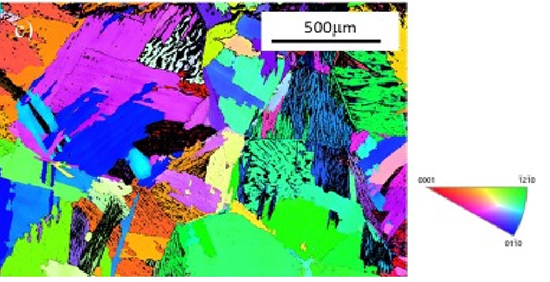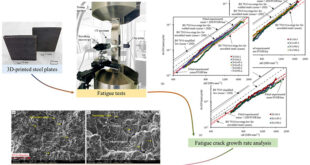Significance
Titanium alloys are engineered materials made by combining titanium with other chemical elements to improve the natural properties of pure titanium. The result is a range of alloys that are extremely strong, lightweight, corrosion-resistant, and capable of withstanding extreme temperatures. These characteristics make titanium alloys invaluable across various industries, including aerospace, medical, automotive, and marine. For instance, in the aerospace industry, the strength, lightweight nature, and resistance to high temperatures of titanium alloys make them ideal for critical structural parts of aircraft and spacecraft. They are used in engines, airframes, and other components where strength-to-weight ratio and performance at high temperatures are crucial. Titanium alloys, such as Ti-6Al-4V, are extensively used for their ability to maintain structural integrity while reducing the overall weight of the aircraft, which leads to improved fuel efficiency and performance. Moreover, titanium alloys are biocompatible which makes them perfect for medical implants such as hip and knee replacements, dental implants, and bone screws. Their resistance to corrosion and biological fluids, along with their ability to osseointegrate, are key factors in their application in the medical field. The most commonly used alloy in this sector is Ti-6Al-4V ELI (Extra Low Interstitial), which has reduced oxygen content to improve ductility and fracture toughness. Additionally, the automotive industry uses titanium alloys to reduce vehicle weight and improve performance and fuel efficiency. High-performance and luxury vehicles often feature titanium alloys in engines, exhaust systems, and suspension components because of their durability and resistance to corrosion and heat. While still more expensive than other metals, the use of titanium alloys is increasing in automotive applications where performance and longevity are paramount. Furthermore, the corrosion resistance of titanium alloys makes them ideal for marine applications, especially in environments that are highly corrosive, such as saltwater. They are used in shipbuilding for parts like propellers, hulls, and other structural components exposed to harsh marine environments. Titanium’s resistance to seawater corrosion extends the lifespan of these components, reducing maintenance costs and downtime.
The dwell fatigue behavior of Ti-685, an alloy initially believed to exhibit significant dwell sensitivity under certain loading conditions. Dwell sensitivity refers to the material’s response to sustained loading (or dwell periods) at peak stress levels, a condition that closely simulates the operational stresses encountered by gas turbine fan discs and other critical aerospace components. This phenomenon is of paramount importance, as it can lead to premature failure in components that are otherwise designed to withstand cyclic loading conditions. A new study published in the International Journal of Fatigue and conducted by Professor Martin Bache Professor Helen Davies and Dr Ji Li from the University of Swansea in the United Kingdom, the authors addressed an intriguing aspect of material science, specifically focusing on the dwell fatigue sensitivity of the near-α titanium alloy Ti-685, a subject that merges the boundaries of materials engineering and applied mechanics. The importance of such studies cannot be overstated, particularly when considering the critical applications of titanium alloys in aerospace and high-performance engineering, where fatigue resistance plays a pivotal role in the reliability and longevity of components. The authors used remnants of Ti-685 specimens from previous experiments to study in methodical investigation that included fatigue testing, micro-textural characterization, and fractography. Their approach was meticulous, aiming to discern the dwell sensitivity of Ti-685 through a combination of cyclic and dwell loading tests. Surprisingly, the study revealed no significant dwell sensitivity in the material, contradicting previous findings and prevailing theories regarding its fatigue behavior. This outcome is particularly interesting when considering the material’s microstructural characteristics. Ti-685’s microstructure, which can vary between aligned and basketweave patterns due to thermo-mechanical processing, plays a crucial role in its fatigue response. The study’s detailed analysis of these microstructures, combined with fatigue data, provides a rich dataset for understanding the complex interplay between microstructural features and fatigue performance.
The team introduced the concept of “engineering relevant dwell sensitivity” is a critical contribution to the field. It emphasizes the need to distinguish between scientific interest and practical engineering significance when evaluating material performance. This distinction is vital for the design and selection of materials for aerospace and other high-stress applications, where the safety and reliability of components are non-negotiable. The findings challenge the conventional understanding of dwell sensitivity in Ti-685 and, by extension, in similar titanium alloys. They highlight the importance of considering microstructural effects, specimen geometry, and the source of material in the assessment of dwell fatigue behavior. This nuanced understanding of dwell sensitivity could lead to more accurate predictions of material performance and, consequently, to the design of safer, more reliable engineering components.
The study opens up several avenues for future research. One potential direction is the exploration of different microstructural variants and their response to dwell loading in a broader range of titanium alloys. Another is the investigation of the effects of manufacturing processes on the material’s dwell sensitivity, providing insights that could influence future materials processing and component design strategies. Additionally, the proposed definition of “engineering relevant dwell sensitivity” offers a new framework for evaluating material performance, emphasizing the need for studies that not only advance scientific knowledge but also have direct implications for engineering practice. This approach could foster a closer collaboration between academia and industry, driving innovations in material design and application that are both scientifically sound and practically relevant.
In summary, the work conducted by the team at the University of Swansea represents a significant step forward in our understanding of the dwell fatigue behavior of Ti-685. By challenging established theories, introducing new concepts, and highlighting the critical role of microstructural and geometric factors, this research contributes valuable insights to the field of materials engineering. It underscores the complexity of material behavior under operational stresses and the ongoing need for rigorous, application-focused research in the development of the next generation of aerospace materials.

Reference
M.R. Bache, J. Li, H.M. Davies. A re-assessment of Ti-685 as a dwell sensitive titanium alloy and a definition for engineering relevant dwell behaviour. International Journal of Fatigue, Volume 178, January 2024, 108008
 Advances in Engineering Advances in Engineering features breaking research judged by Advances in Engineering advisory team to be of key importance in the Engineering field. Papers are selected from over 10,000 published each week from most peer reviewed journals.
Advances in Engineering Advances in Engineering features breaking research judged by Advances in Engineering advisory team to be of key importance in the Engineering field. Papers are selected from over 10,000 published each week from most peer reviewed journals.



